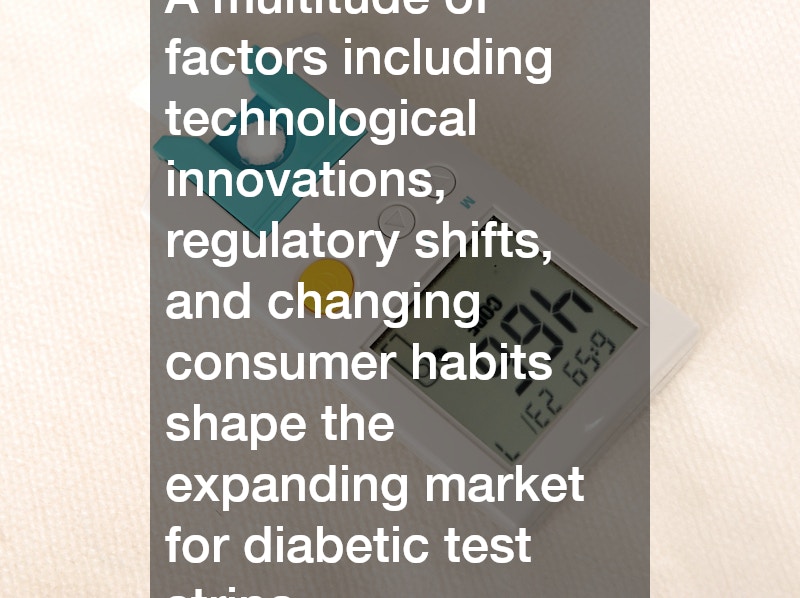Diabetes is a growing global health challenge, placing greater emphasis on effective management strategies. Diabetic test strips are essential in monitoring blood glucose levels, enabling patients to make informed decisions about their health. In 2024, understanding what drives diabetic test strip sales is paramount to addressing the needs of an expanding diabetic population.
What are the key factors influencing diabetic test strip sales in 2024?
Technological Advancements
Technological advancements in diabetic test strips are revolutionizing diabetes management, offering more accurate and user-friendly options. New developments include continuous glucose monitoring systems that seek to replace traditional strips, although test strips remain indispensable for many.
These innovations are making self-monitoring easier and more convenient, driving consumer interest and sales.
Manufacturers are investing heavily in research to improve test strip technology, leading to innovations that enhance efficacy and ease of use. The continuous improvement in biosensor technologies contributes to faster, more precise readings. This is essential as it aligns with patients’ desire for seamless integration of health monitoring into their daily lives, influencing market dynamics.
Healthcare Policies and Regulations
Healthcare policies and regulations significantly impact the availability and cost-effectiveness of diabetic test strips. Government initiatives can both constrain and facilitate access by altering insurance coverages and reimbursement rates. In 2024, navigating these regulatory landscapes is crucial for producers and consumers alike.
Changes in policies can affect the incentives for manufacturers, influencing pricing strategies and availability of diabetic test strips. Regulatory environments are evolving, often becoming more stringent to ensure quality and safety, which can add to production costs. These regulatory pressures shape market competition and consumer options.
Market Trends and Consumer Preferences
Understanding market trends and evolving consumer preferences is vital for gauging future test strip sales. Growing health awareness and the DIY health management trend are increasing interest in self-monitoring solutions. Diabetic test strips are poised to benefit from these trends as patients seek more proactive roles in their healthcare.
Consumers now prioritize attributes like ease of use, portability, and cost-effectiveness in their selection of test strips. The influence of direct-to-consumer marketing and online purchase options also bolsters this segment. As more patients engage with digital health, sales are expected to rise in line with these consumer-driven developments.
How are consumer behaviors and awareness impacting the demand for diabetic test strips?
Increase in Diabetes Diagnosis
The incidence of diabetes globally is on the rise, leading to increased demand for diabetic test strips. Early diagnosis and widespread screening are crucial in this surge, calling for more test strips to monitor patient conditions. As diagnosis rates climb, so does the consumer base requiring consistent access to these vital tools.
With more individuals diagnosed with diabetes annually, there is a corresponding need to equip them with effective monitoring devices. Public health campaigns contribute to heightened awareness and earlier detection, impacting sales positively. Healthcare systems strive to improve diagnostic capabilities, ensuring that the demand for test strips is likely to grow.
Patient Education and Self-Monitoring
Patient education plays a pivotal role in promoting the use of diabetic test strips, advocating for self-monitoring practices. Increased education initiatives have successfully illustrated the benefits of regular glucose monitoring to patients. Educated patients are more likely to adhere to medication regimens and use test strips diligently, driving demand.
Empowered with knowledge, patients adopt healthier lifestyles and embrace available technologies to manage their conditions. Workshops and community programs are crucial in providing this education, spearheaded by healthcare providers and advocacy groups. As patients become more informed, they positively influence market demand for quality test strips.
Digital Health Platforms and Support Groups
Digital health platforms and social media support groups are impactful in increasing awareness and influencing consumer purchasing decisions regarding diabetic test strips. These platforms create engaging spaces for individuals to share experiences and seek advice, fostering a stronger sense of community. The proliferation of mobile health apps and telemedicine solutions furthers patient engagement and knowledge.
Conclusion
In summary, a multitude of factors including technological innovations, regulatory shifts, and changing consumer habits shape the expanding market for diabetic test strips. As the prevalence of diabetes continues to rise, test strips play an increasingly crucial role in effective disease management. Looking ahead, understanding these dynamics is vital for stakeholders to adapt and thrive in this evolving landscape.
Technological, policy, and market trend analyses reveal opportunities and challenges that will define the future trajectory of test strip sales. Patient advocacy, digital integration, and enhanced education efforts are key components in sustaining growth. Grasping these factors allows for informed strategies that ensure both patient well-being and market success.
.


